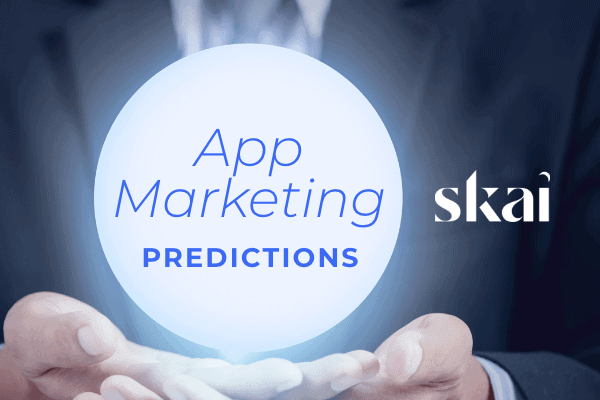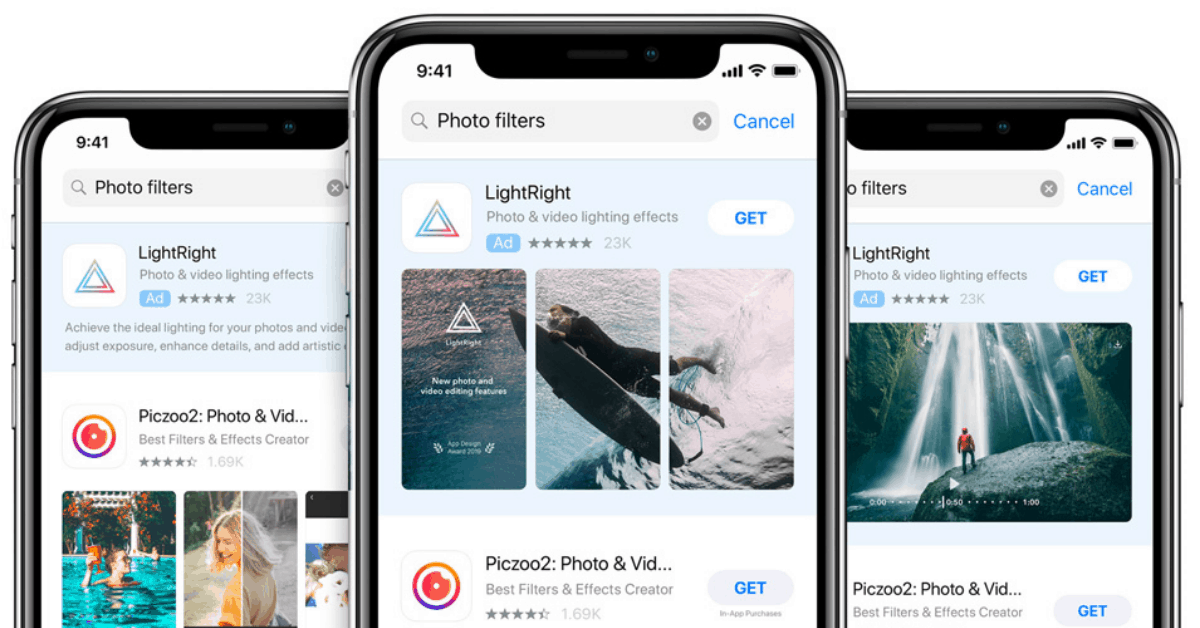
Joshua Dreller
Sr. Director, Content Marketing @ Skai

Joshua Dreller
Sr. Director, Content Marketing @ Skai

Here at Skai, we have decades of combined experience in key digital advertising channels across our client, product, sales, and marketing teams. Every year around this time, we check in with our internal experts to hear how they think these channels will evolve. So follow along this week as we share what we believe the future holds for paid search, paid social, retail media, app marketing, and measurement.
Of course, one of the most significant events of 2021 for app marketers happened in the spring when Apple’s iOS14 (actually iOS14.5) release limited the default tracking of consumers across its devices.

This shift profoundly impacts how mobile apps can target, personalize, and measure their advertising. The two most significant challenges compared to a year ago for app marketers are that 1) it’s now much harder to figure out exactly which publishers/ads are working best to accurately optimize their media plans and 2) it’s less clear which users have installed their mobile apps to target in-app purchases, the largest source of revenue for most app makers.
Apple had announced the change the year before—and even delayed the move to give businesses hurting from the pandemic more time to prepare. Apple CEO Tim Cook summarized it to empower users to decide how they want to be tracked. “What we’ve been all about is putting the power with the user. We’re not making the decision, we’re just simply prompting them to be asked if they want to be tracked across apps or not. And, of course, many of them are deciding no,” said Cook.
A study done six months after the iOS14 release shows that upwards of 96% of users do not opt-in to being tracked. That’s a significant number, given that Apple devices represent more than half of US smartphone operating systems. So while `many things are happening in the world of mobile, one of the major storylines of 2022 will be the year where app marketers continue to figure out how to adapt their strategies to this new market dynamic.

The future of mobile is zero buffering and zero latency. Live, 4K video won’t be a challenge anymore. App download adoption has been a real issue for app marketers, with slow or stuttering download speeds the main culprit. Uninstalls are greatly affected by network clogging, which makes using mobile apps very frustrating. These things virtually go away in a 5G world. This, along with smartphone storage space growing as well, will mean that the mobile apps of the future are going to be bigger and more powerful than we’ve ever seen before.
App marketers will be quick to jump on the 5G train with “heavier,” more functional app advertising—like 4K video ads—that will push the boundaries of what most thought was possible with mobile devices.

An October 2021 study shows that one-third (35%) of consumers are ordering more food on mobile apps than three months ago, and customers are even more likely to spend more when ordering via a restaurant app. Some of the top reasons why: missing menu items (47%), cold food (45%), a long wait time (42%), and the lack of efficiency (41%).
“The report continues to signal rising consumer demand for better functionality, ease, and convenience,” said the report’s author. “This is an opportunity for brands to eliminate friction across the customer journey, from the moment an order is placed through to the moment a customer picks up their order. For restaurant brands, the digital pivot is imperative to getting the customer experience right.”
The benefits of mobile ordering are felt on both sides. Consumers like ordering through mobile apps because they can take their time going through the menu and figuring out exactly what they want. It also speeds up the time it takes to get food because the orders are ready once they arrive. QSR companies like apps too. It enables them to focus more employees on making orders rather than taking them, which accelerates food service which increases customer satisfaction. They also can build better customer relationships with loyalty programs and pre-checkout add-on recommendations, which increases order volume and average order size.
In 2022, we will see QSRs prioritize their app-driven business even more and find differentiated ways to engage customers with their app.
Apple’s user tracking change may be just the start of a broader market shift. Google could follow suit. In June, Google released an announcement on its Android developer site about upcoming changes to tracking:
As part of Google Play services update in late 2021, the advertising ID will be removed when a user opts out of personalization using advertising ID in Android Settings. Any attempts to access the identifier will receive a string of zeros instead of the identifier. To help developers and ad/analytics service providers with regulatory compliance efforts and respect user choice, they will be able to receive notifications for opt-out preferences….This Google Play services phased rollout will affect apps starting late 2021 and will expand to affect apps running on all devices that support Google Play in early 2022.
Although this announcement doesn’t outline a shift as dramatic as Apple’s, it’s certainly not hard to imagine that it’s the first step in that direction. So what would this mean to app marketers? Today, iOS represents 58% of mobile operating systems in the US, and Android is second on the list with 41% of the mobile market. That’s 99% of US smartphones!
If and when this occurs, it will truly represent a new era in mobile marketing. Look out in 2022 to see if Google announces anything further on this topic.

However, since the iOS14 shift, the way that we see games developed and designed is starting to change. They are being built to adapt to the new reality to be marketed for today’s “tracking-less” environment. For example, one of the approaches we’re seeing is that games are starting to be sold in a subscription manner, where users pay a monthly fee to play versus free plus in-app purchases. Thus, app games must appeal to broader audiences to attract the most users to drive upfront, recurring revenue versus built to attract niche gamer segments that can be monetized over more extended periods of time.
In 2022, app marketers will be tasked with promoting games a bit differently than they have over the last several years to fit better the new monetization strategy that developers now need to take.
Over the last several years, app marketers have realized the incredible value of advertising within the app store marketplace search results, especially with Apple Search Ads. These ads are just as valuable as paid search ads are for Google; as people search for what they need, highly relevant ads are matched to them via their search terms.
The results speak for themselves:

With the new tracking limitations on targeted mobile users, app marketers will need to rely on trusted ways to reach users at the times that make the most sense—and Apple Search Ads fit the bill.
Mobile app marketers know the install is only the beginning. Making your app not only stand out among millions but remain sticky comes down to a cross-publisher marketing strategy.
Reach your best mobile users and drive acquisition with Skai—the only complete mobile advertising platform for tapping into the opportunity of Apple Search Ads and more.
Skai’s mobile app solutions help you manage all your mobile app marketing campaigns in one place:
Reach out today to schedule a brief demo to see everything Skai’s™ app marketing platform has to offer you.
You are currently viewing a placeholder content from Instagram. To access the actual content, click the button below. Please note that doing so will share data with third-party providers.
More InformationYou are currently viewing a placeholder content from Wistia. To access the actual content, click the button below. Please note that doing so will share data with third-party providers.
More InformationYou are currently viewing a placeholder content from X. To access the actual content, click the button below. Please note that doing so will share data with third-party providers.
More Information